Topics in Basic Science
What is science? Qualities of a scientist Resources from living things Resources from animals Importance of immunization Types of Carbohydrates: Monosaccharides and Polysaccharides Carbohydrates: Disaccharides and Oligosaccharides Len Academy Examination Questions for Basic Science, JSS2, 2nd Term Len Academy Examination Questions for Basic Science, JSS3, 3rd Term Len Academy Examination Questions for Basic Science, JSS3, 2nd Term Primates: Characteristics of Primates Effects of improper waste management Waste Management: Causes of waste in the society Concept of mass and weight Mineral Salts: Sources, functions and deficiencies of macronutrients Sources, functions and deficiencies of micronutrients Len Academy questions for Basic Science JSS1 Len Academy mid-term test questions for Basic Science JSS1, 2nd Term Microorganisms causing food, water and air borne diseases Vector borne organisms and the diseases they cause Bones of the Human SkeletonAcademic Questions in Basic Science
Which of the following diseases is associated with river blindness?
A. Anthrax
B. Lawnmower Disease
C. Onchocerciasis
D. Devil's Crunch
E. Trypanosomiasis
F. Tularemia
The vector for yellow fever is _____.
A. Aedes Mosquito
B. Female Anopheles Mosquito
C. Plasmodium
D. Flavivirus
E. Black Fly
F. Bacillus Anthracis
The bones of the head and face make up the skull. These bones are _____ in number.
A. 12
B. 14
C. 16
D. 18
E. 20
F. 22
Bacteria are not a constituent of our environment.
A. True
B. False
Below are types of drugs. Which of these is considered as pain killers?
A. Stimulants
B. Depressants
C. Opiods and Morphine Derivatives
D. Hallucinogens
E. Anabolic Steroids
F. Cannabinoids
Which of the following statement is false concerning drugs?
A. Drugs can be inhaled
B. Drugs can be injected directly into the bloodstream
C. Drugs can be eaten
D. Drugs exist exclusively in the forms of tablets and syrups
E. Drugs can be placed under the tongue
F. Drugs can be taken with water or another liquid
Vaccination involves a process of introducing pathogens or germs into a person in order to prevent such person from the diseases they cause.
A. True
B. False
With regards to the human health, foreign bodies are best regarded as _____.
A. International bodies
B. Antilators
C. Antibodies
D. Antigens
E. Antibiotics
F. Antidotes
The adult human skeleton is composed of 206 bones. At birth, a baby initially has 300 bones. As the baby grows and develops, some of these bones fuses or joins together, giving a total of 206 bones afterwards.
Together, these 206 bones form a framework on which the body take its shape. This bony bodily framework that make up the body is termed skeleton.
The human skeleton is upright, thus giving them their unique upright appearance. In humans, it performs six main functions.
Please read on the functions of the human skeleton here.
Below are all the bones that make up the human skeleton:
1. The bones of the head and face, also referred to as the skull. It is made up of 22 bones. These are:
(A) The cranium or brain box which houses the brain. It is made up of 8 bones. The bones are:

(B) The bones of the face which is made up of 14 bones. These are:

Please read on Types of Bones here.
2. The Ears has 6 small Bones, 3 on each ear. All of these bones are present in the middle ear. They are:

3. The Throat has one bone named the hyiod bone
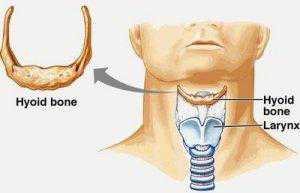
Please read on the differences between bones and cartilages here.
4. The shoulder has 4 bones, two on each side. These bones attach the arm or upper limbs to the body. They include:
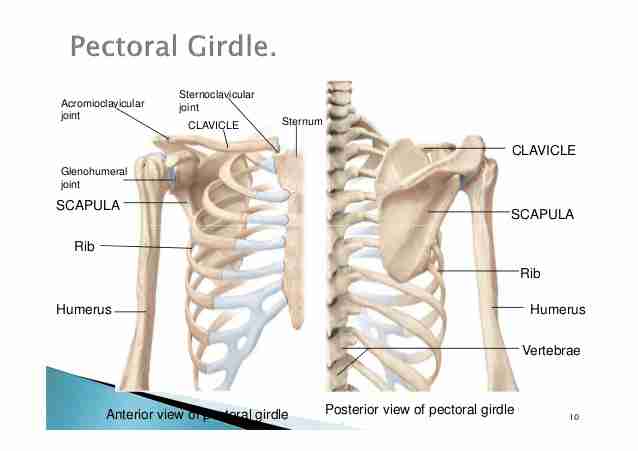
Note: Medial is an anatomical term that refers to any bodily part closer to the body's midline while the term lateral refers to the bodily part located away from the body's midline. Both terms will be used throughout this article.
The manubrium is the upper part of the sternum. The sternum is the bone at the center of your chest. The sternum holds the ribs anteriorly.
The glenoid cavity of the scapular attaches to the round head of the humerus to form the glenohumeral joint; and this is the most flexible (and weakest) joint in the human body, permitting movement in 360o. This joint is a typical example of a ball and socket joint.
Together, the scapular, lateral side of the clavicle and the upper part of the humerus forms the pectoral girdle.
Please read on some Amazing Facts in Biology here.
5. The Thorax or Chest has 25 bones
The thorax extends between the neck and the abdomen. A muscular sheet called the diaphragm separates the thorax from the abdomen.
The bones of the thorax protect the heart and the lungs.

The thoracic bones are:
The sternum also holds the clavicle (collar bone) in its upper part called the manubrium.
The sternum can be divided into 3 parts. These are:
Manubrium
Body of the sternum
Xiphoid process
The ribs and sternum are important in the breathing process. Meanwhile, certain people may have an extra rib (13th rib).
Please read on the Basic Characteristics of Life here.
Understand that the term anterior means 'in front' while posterior means 'behind' or 'at the back'.
6. The vertebral bones or vertebral column or spinal column are group of small bones found posteriorly and in the mid-line region of our body (back region).

Each vertebrae is joined together via a fibro elastic joint to form the vertebral column or spinal column.
These bones making up the vertebral column are 33 in numbers. They protect the spinal cord and serve as an attachment to the ribs posteriorly.
The vertebral bones include:
You can read on the uniqueness of man here.
7. The arm is the region extending from the shoulder joint to the elbow. It has 2 bones. These are:
Two humerus, one for each arm: This is the single long bone of each arm. It commences from the shoulder joint and terminates at the elbow joint.
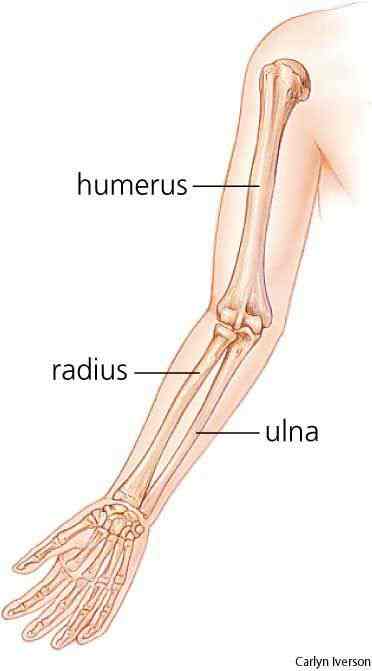
You can read on bone and bone cells here.
8. The forearm is the region between the elbow and the wrist. It has 4 bones. The bones are:
The ulna and radius are both prismatic in shape.
Please read on the classification of bones based on shape here.
9. The hand is the region between the wrist and the tip of the fingers. It is made up of 54 bones.

(A) 16 carpal bones, also called the wrist bones; 8 for each hand.
The 16 carpal bones are small irregularly shaped bones found in the wrist and arranged in two rows of four bones each. They are:
2 scaphoid bones
2 lunate bones
2 triquetral bones
2 pisiform bones
2 trapezium bones
2 trapezoid bones
2 capitate bones
2 hamate bones
(B) 10 Metacarpal Bones, 5 on each hand.
The metacarpals are the bones of the palms and they lie between the wrist and anterior end of the finger bones; (or between the tarsal bones and the phalanges)
(C) 28 finger bones or phalanges. You can observe these bones by looking at your fingers.
Understand that three phalangeal bones are present in each finger except for the thumb which has only two.
Each of these bones is separated by joints. You can observe these joints by making a fist.
The phalanges include:
10. The pelvic or hip has 2 bones
The pelvis comprise of 2 coxal or innominate or hip bones. Both hip bones fuse at the middle to form the pelvis or pelvic girdle.
Each pelvic bone can be divided into 3 parts. These are:
Ilium
Ischium
Pubis
Please read on the Male Reproductive System here.
11. The thigh is the region between the hip and the knee. It is made up of 2 bones.
Two femur bones (one for each thigh). The femur is the longest and strongest bone in the human body. It’s also referred to as the thigh bone.
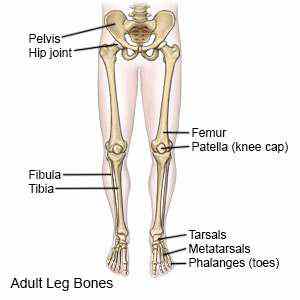
12. The leg is the region between the knee and the ankle. It comprises of 4 bones, two for each leg. These are:
13. Present in the knee joint are 2 patella bones.
14. The bones that make up the foot. They are 52 in numbers. They include:
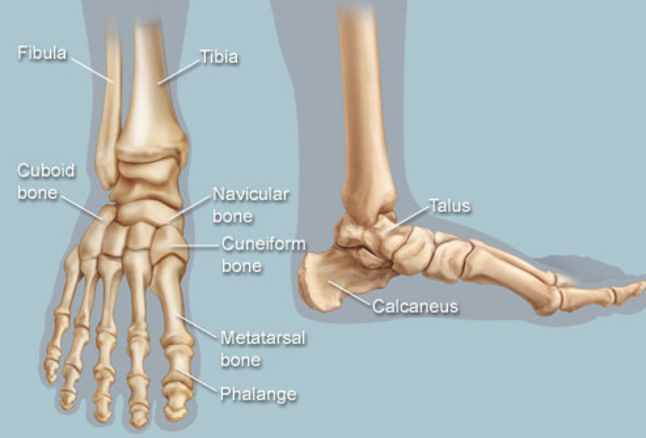
(A) The tarsal bones also called the ankle bones: It comprises of 14 small bones. These are:
2 calcaneus bones: Bones of the heel
2 navicular bones
2 talus bones
2 medial cunieform bones
2 intermedite cunieform bones
2 lateral cunieform bones
2 cuboid bones
(B) 10 metatarsal bones, 5 on each foot.
The metatarsal bones lie between the ankle and the anterior end of the toe bones.
(C) 28 Phalanges or toe bones. These bones are put into the followings:
10 proximal phalanges, 5 for each foot.
8 intermediate phalanges. It is noteworthy to state that the big toe has no intermediate phalanges.
10 distal phalanges, 5 for each foot.
Kindly share this article via the links below:

Please click here to contact Alfred if you require any of the following services:
If you need a standard website at an affordable price.
Online training on the academic subjects: biology, chemistry and basic science.
If you require an advanced smart school management system (web application) for your school.
Click here to read on Len Academy Smart School Software.
Please click here to follow Len Academy on Google News.
Please Register here or Login here to contribute to this topic by commenting in the box below.
Amazing facts in Basic Science
According to scientific research, if the first tear drop comes from the right eye, it’s tears of joy. If it comes from the left eye, then it is as a result of pain
Dentistry is the oldest profession in the world. This is considered true because a research conducted by the University of Bologna, Italy on a 14,000-year-old skull found that one rotten tooth in the jaw had been deliberately scoured and scraped with a dental tool
Scientific research has it that the human nose can distinguish more than a trillion different odors
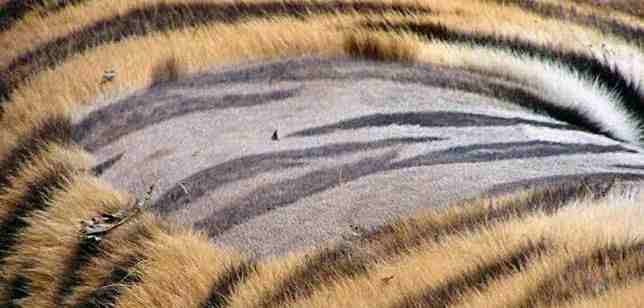
Tigers have striped fur. So also is their skin

The most common wild bird in the world is native to Africa, and it's the red-billed quelea with a population estimated to be around 1.5 billion
Of all animals, mosquitoes hold the record of killing most humans annually. They are responsible for the deaths of 725,000 - 1,000,000 persons yearly
Antibiotics fights and kills bacteria. However, they do nothing to a virus
All insects have six legs. However, dragonfly has six legs but can't walk
The chin is defined as the protruding part of the face below the mouth, formed by the apex of the lower lip. It is shown below:

Interestingly, humans are the only animals with chin

Ripe cranberries will bounce like a ball. For this reason, they are nicknamed 'bounceberries'. They will also float in water
Notable points in Basic Science
We have six classes of food. These are:
Carbohydrates
Proteins
Fats and Oils
Vitamins
Mineral Salts
Water
In humans, roughages are not classified as one of the classes of food. This is so because they aren't digested. Instead, roughages facilitate the movement of bowels in the large intestine (colon); and for this reason, they can become useful in treating constipation.
Food refers to anything that is ingested by living organisms, giving them nutrients and thus enabling them to stay alive.
As an instance, 99% of a panda's diet is bamboo. In this case, bamboo is considered as food to a panda since it provides a source of nutrient and keeps it alive. This is shown in the image below:

The only process in nature that actively enriches our atmosphere with oxygen is photosynthesis. Every other process like respiration, burning and combustion takes away oxygen from it. In addition, they introduce carbon(IV)oxide (CO2) into the atmosphere.
Photosynthesis is also the only process that takes away carbon(IV)oxide (CO2) from the atmosphere.
Photosynthesis is defined as a process by which green plants manufacture food by utilizing carbon(IV)oxide and water in the presence of sunlight.
Oxygen is given off as a by-product of photosynthesis. In regards to this, it is recommended that each person plants a tree.
Matter is composed of particles which can be:
Tightly packed together (as seen in solids).
Loosely packed together (as seen in liquids).
Completely separated (as seen in gases).
The movement of the particles of matter is a function of the overall kinetic energy present in them. You can think of kinetic energy as energy in motion.
An increase in the particles' vibrational, rotational or translational motion will imply an increase in temperature while a decrease in the particles motion (vibrational, rotational and translational) will mean a decrease in temperature. Based on this knowledge, we can therefore define temperature as the measure of the average kinetic energy possessed by the particles of matter.
Intelligence Quotient (IQ) is a score derived from a set of standardized tests developed to measure a person's cognitive abilities in relation to their age group.
IQ may also be defined as the ratio of mental age (MA) to chronological age (CA) multiplied by 100.
Below are some formulas pertaining Intelligence Quotient:
IQ = MA x 100 ÷ CA
MA = Mental age
CA = Chronological age
IQ above 100 = Brilliance
IQ that equals 100 = Average
IQ below 100 = Below Average